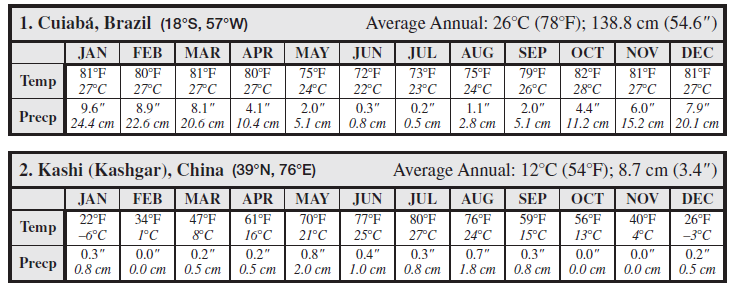A species has evolved an asexual mode of reproduction by having offspring develop from unfertilized eggs. Which of the following will be TRUE of this species' response to natural selection?
A) There will be more deaths from natural selection because there is no mutation.
B) The species will increase in numbers because genetic variation is increased.
C) There will be less genetic variation from recombination and a risk of not adapting quickly to environmental change.
D) The species will compensate for loss of genetic variation by hybridizing with other species.
E) There will be fewer deaths from natural selection because sexual recombination always leads to extinction.
Answer: C
You might also like to view...
List the major height categories of clouds. What differences might you expect to find in the clouds that form at these different levels?
What will be an ideal response?
For each of the following six locations, complete the climograph using the average monthly temperature (“Temp”) given in degrees Celsius and Fahrenheit, and the average monthly precipitation (“Precp”) given in centimeters and inches. The average annual temperature and precipitation are provided for you. After completing the climographs, answer the questions at the end of Part I. You may plot data on the climographs using either S.I. or English (note that the English unit and S.I. unit scales on the climographs are not exactly equivalent). It may be helpful to locate each of these stations on a map (the latitude and longitude of each location is provided). No “H” climates are given.


What type of metamorphism is commonly associated with mountain building at convergent plate boundaries?
A. regional B. hydrothermal C. slow D. contact E. shock
During the next magnetic reversal, the magnetic force field surrounding Earth will shift by about ________.
A. 360° B. 45° C. 180° D. 90° E. 270°